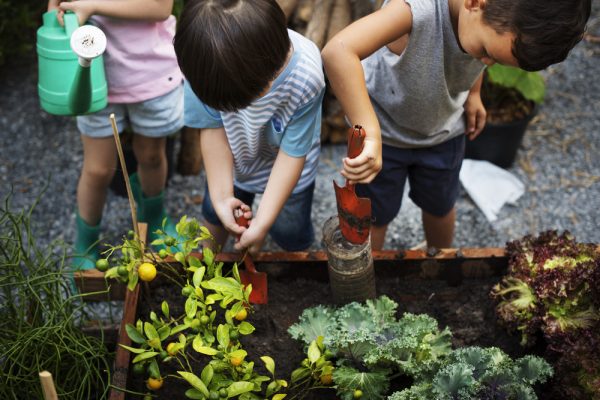
We talk about “redesigning a more equitable food system” a lot. It’s at the heart of Eat REAL’s mission and how we will accomplish our goal of increasing our kids’ health and creating a healthier planet. Our food system isn’t necessarily “broken,” it works as it was built to. Unfortunately, it was built on a myriad of inequalities regarding food access and current-day policies that support corporations’ mass production of unhealthy ultra-processed foods over small farmers and companies working to serve healthful, real foods. It is time to redesign a system that is equitable, accessible, and benefits human health while regenerating our planet. One of the keys to accomplishing this lies in our public school system.
Many children don’t have access to fresh fruits and vegetables, yet 125-160 billion pounds of whole, nutritious food is wasted each year. The problem isn’t that we do not have enough food, it’s that we do not have the systems to get it to the people who need it most. Instead, shelf-stable, highly processed foods loaded with sugar, salt, and unhealthy fats have been prioritized and made the most accessible options. This has led to a rise in childhood processed food-related diseases linked to shorter lifespans and possibly continued health complications throughout their lives.
Our schools are the catalyst for large-scale change. The combined buying power, distribution, and access points provide the potential for change that out scales any other foodservice model. They reach millions of children each day, providing up to 50% of a student’s nutritional intake alongside real food education.
The pandemic highlighted the reach and strength of school foodservice programs as they have provided more meals than food banks in most communities. As these programs continued through the past year, many schools began teaming up with local food banks and pantries to provide additional meal boxes for families available for pick-up with their children’s meals. These efforts got food into the homes that needed it most while supporting local businesses and saving thousands of pounds of fresh food from going to waste.
By helping our schools work with local farms and food companies to buy surplus food, supporting meal programs so they can acquire more funding, and supporting policy that works towards universal free meals for all children beyond the pandemic, we can redesign a food system that centers on human health and planet health and creates more access to real food in the communities that need it most.
Our schools have the ability and opportunity to become a system of food oases for our children. Eat REAL is dedicated to empowering this change and supporting districts in their efforts and journeys. This year we are on track to help connect 300,000 more students with real food at school.
Share this post
Share on facebook
Share on google
Share on twitter
Share on linkedin
Share on pinterest
Share on print
Share on email
